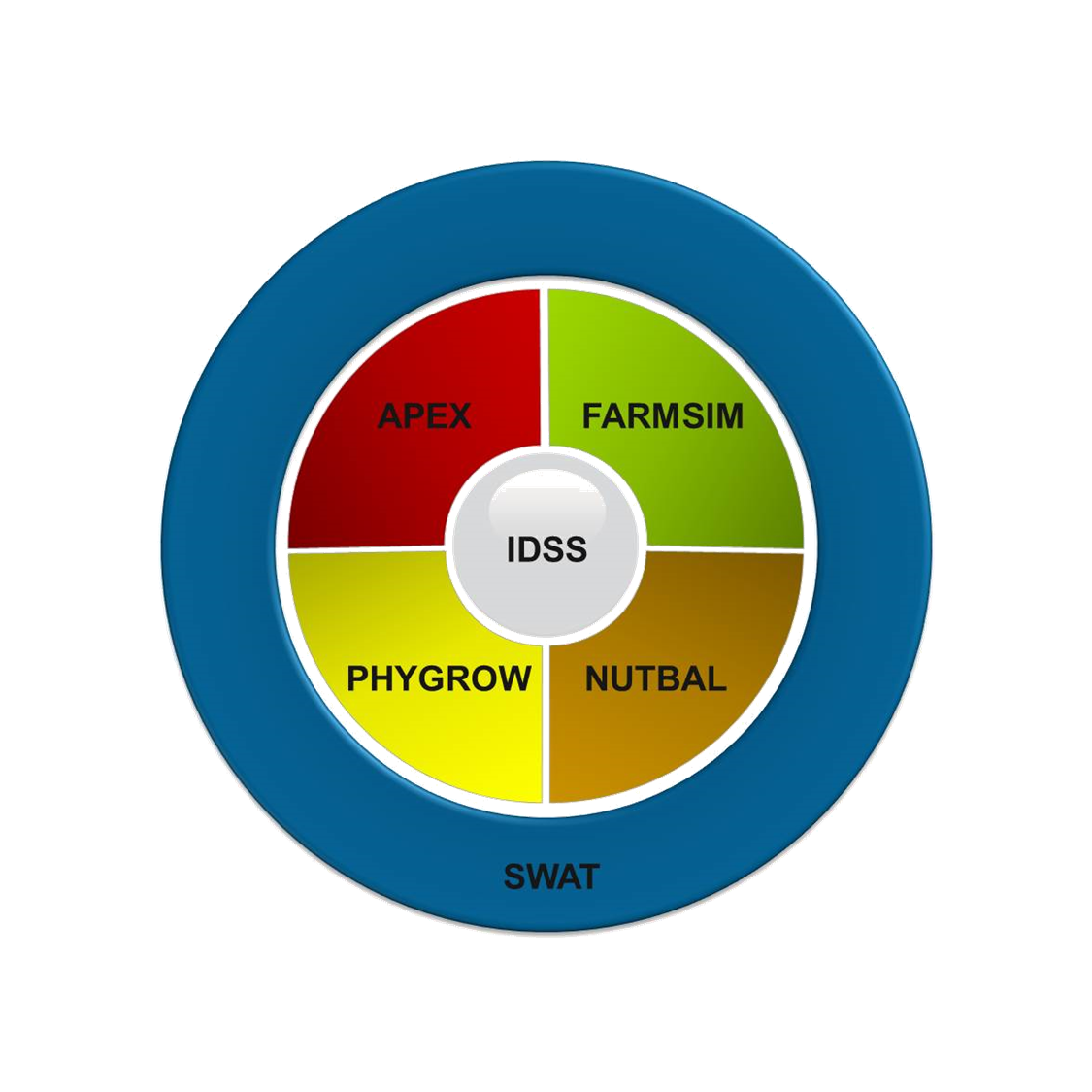Projected IDSS Applications
• Provide common modeling environment for ex ante analyses to inform investment decisions, evaluate progress during project implementation, and forecast integrated impact from interventions.
• Identify optimum outcomes for situations which require trade-offs among production, environmental and economic benefits and costs.
• Hydrologists can anticipate how water harvesting for irrigation will affect stream flows and water quality indicators (e.g., suspended solids, ortho-phosphate, biological oxygen demand).
• Soil scientists can anticipate how alternative cropping systems affect indicators of soil fertility (e.g., topsoil pH, organic matter contents, extractable phosphorus).
• Agronomists can anticipate additional nitrogen fertilizer required to take advantage of irrigation or the increased yield potential of an improved variety.
Human nutritionists can anticipate the impacts of interventions (such as small-scale irrigation to grow green and yellow vegetables) during the dry season on family nutrition.
• Economists can anticipate impacts of increased investments in additional land, fertilizer, seed, and/or irrigation on the probability of farm solvency over the next five years.
• Government officials concerned about floods and sedimentation of rivers, lakes, and irrigation canals can anticipate impacts of check dams on tributaries supporting small scale irrigation projects.
• Government policy makers can anticipate impacts from subsidizing costs of fertilizers, seeds, and other inputs on family nutrition and income from sales of agricultural products.



One Response to Integrated Decision Support System
Pingback: Learning to use Integrated Decision Support Systems is critical to ensure food security and sustainable development in Ethiopia – Innovation Lab For Small Scale Irrigation